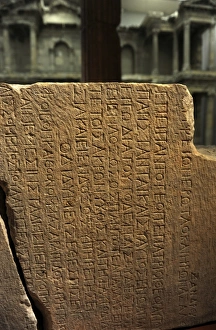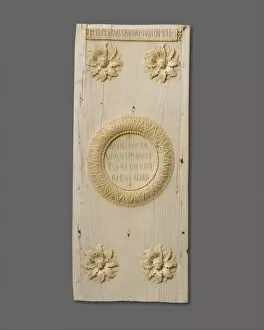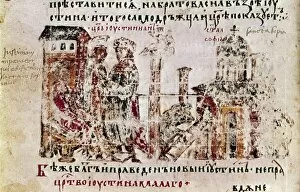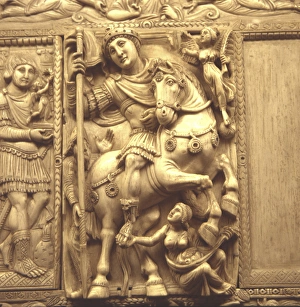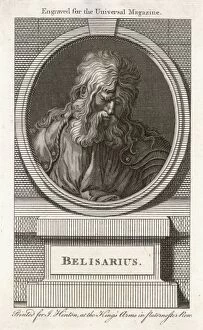Justinian Collection (page 3)
Justinian I, also known as Justinian the Great, was a Byzantine emperor who reigned from 527 to 565
All Professionally Made to Order for Quick Shipping
Justinian I, also known as Justinian the Great, was a Byzantine emperor who reigned from 527 to 565. He is remembered for his significant contributions to the empire and his ambitious efforts to restore its former glory. One of Justinian's most notable achievements was his partnership with Empress Theodora. She played a crucial role in shaping his policies and decisions, making her one of the most influential women in Byzantine history. Together, they embarked on numerous projects aimed at strengthening their rule and expanding their territories. During his reign, Justinian set out to reconquer lost territories in Italy. Ravenna became a key city under Byzantine control during this time. It served as an important administrative center and showcased the grandeur of Justinian's empire. The Basilica of Saint Vitale in Ravenna stands as a testament to Justinian's architectural legacy. This stunning church displays intricate mosaics that depict Emperor Justinian and Empress Theodora among other religious figures, highlighting their close association with divine authority. Justinian's court was renowned for its opulence and sophistication. A famous depiction from around 547 shows him surrounded by members of his court in Italy. This image captures the splendor and power that characterized his reign. Aside from military conquests and political endeavors, Justinian made significant contributions to legal reform through the Corpus Iuris Civilis (Body of Civil Law). This comprehensive collection of laws shaped Western legal systems for centuries to come. Despite all these accomplishments, not everything went smoothly for Justinian during his rule. An engraving titled "Belisarius Begging" portrays General Belisarius pleading for alms after being accused unjustly by jealous rivals within the empire. Justinian left an indelible mark on both Eastern Roman history and European civilization as a whole. His ambition drove him towards greatness but also brought challenges along the way.

